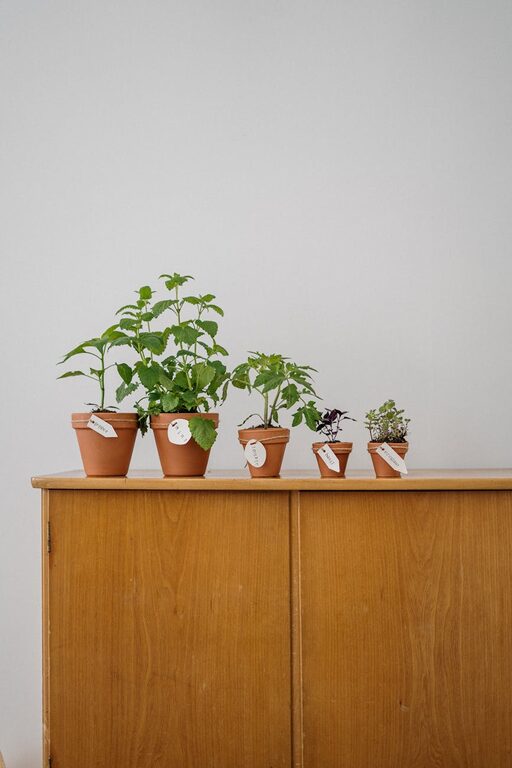Starting a small herb garden indoors is a rewarding way to bring fresh flavors to your cooking and add a touch of greenery to your living space. Whether you have a sunny windowsill or a small corner in your kitchen, growing herbs inside is easy and accessible for beginners. This guide will walk you through the essentials—from choosing the right herbs to caring for them—so you can enjoy homegrown herbs all year round.
Why Grow Herbs Indoors?
Indoor herb gardening has many benefits:
– Freshness: Pick herbs just before cooking for the best flavor.
– Convenience: No need to buy herbs at the store frequently.
– Year-round growth: Herbs can thrive indoors regardless of the season.
– Decor: Herb plants add a lovely green touch to your home.
– Educational: A fun way to learn about plants and gardening.
Now, let’s explore how to get started with your own indoor herb garden.
Choosing the Right Herbs
Some herbs are better suited to indoor growing than others. Here are beginner-friendly options:
– Basil: Needs plenty of light and warmth.
– Parsley: Tolerates moderate light, great for salads.
– Mint: Easy to grow, but can spread rapidly; best in separate pots.
– Chives: Requires less light, perfect for windowsills.
– Thyme: Prefers bright light, drought-tolerant.
– Oregano: Likes dry conditions and bright light.
– Cilantro: Needs cool temperatures and good drainage.
Tip: Start with two or three herbs you use the most in your cooking.
Selecting Containers and Soil
Containers
Choose pots with good drainage holes to prevent waterlogging. Herbs generally don’t like “wet feet,” which can cause root rot.
– Size: Small to medium pots (4–8 inches) work well.
– Material: Clay or terracotta pots are good for breathability; plastic pots retain moisture.
– Grouping: You can grow multiple herbs in separate pots or combine compatible herbs in a larger container.
Soil
Use a high-quality potting mix formulated for indoor plants. Avoid garden soil, which can be heavy and may contain pests or diseases.
– Look for “well-draining” soil to prevent excess moisture.
– You may also mix in some perlite or vermiculite to improve drainage.
Providing Proper Light
Herbs typically require 6–8 hours of light daily. Here are options to ensure your herbs thrive:
– Natural Light: Place your herb garden by a south-facing window for maximum sunlight.
– Artificial Light: If natural light is limited, use LED grow lights to supplement. Position them about 6-12 inches above plants for 12-16 hours daily.
– Rotate Plants: Turn your pots occasionally so all sides receive light evenly.
Watering Your Indoor Herbs
Proper watering is crucial:
– Check the soil moisture daily by touching the top inch.
– Water when the soil feels dry to the touch.
– Avoid overwatering; herbs prefer slightly moist but not soggy soil.
– Use room-temperature water.
– Empty excess water from saucers or trays to prevent root rot.
Caring for Your Herb Garden
Fertilizing
– Use a balanced, water-soluble fertilizer once a month.
– Dilute to half the recommended strength to avoid overfeeding.
– Organic options like compost tea or fish emulsion also work well.
Pruning & Harvesting
– Regularly pinch back herb tips to encourage bushier growth.
– Harvest leaves in the morning for best flavor.
– Never remove more than one-third of the plant at a time to avoid stress.
– Remove any yellow or damaged leaves to keep plants healthy.
Pest Control
Indoor herbs attract fewer pests, but watch out for:
– Aphids
– Spider mites
– Fungus gnats
Use natural pest control methods such as neem oil sprays or insecticidal soap if needed. Wiping leaves with a damp cloth can prevent dust and pests.
Troubleshooting Common Issues
– Leggy stems: Usually due to insufficient light; move plants to a brighter spot or add grow lights.
– Yellow leaves: Could be overwatering or nutrient deficiency. Adjust water and feed accordingly.
– Slow growth: Check light levels, water, and soil quality.
– Mold on soil surface: Often caused by poor air circulation or overwatering. Allow soil to dry and improve airflow.
Additional Tips for Success
– Label each herb pot to keep track.
– Keep herbs away from cold drafts and heating vents.
– Rotate pots regularly to prevent uneven growth.
– Repot herbs annually or when roots outgrow containers.
Conclusion
Starting a small indoor herb garden is an enjoyable way to bring fresh flavors to your kitchen and green life into your home. With the right herbs, containers, light, and care, you can have a thriving garden no matter the season. Happy gardening!
—
Creating your own indoor herb garden doesn’t take much time or space — but it provides a lot of joy and fresh ingredients. Give it a try today!

